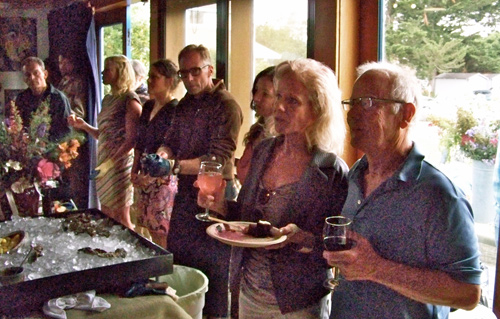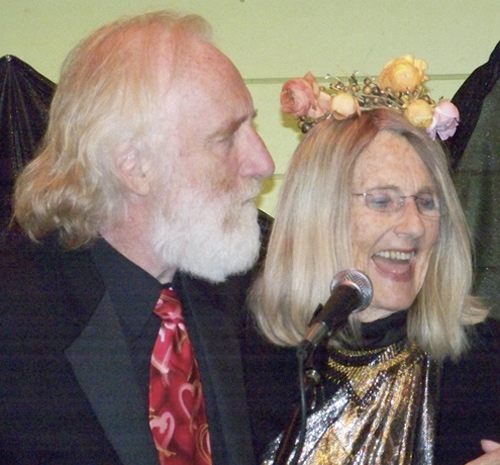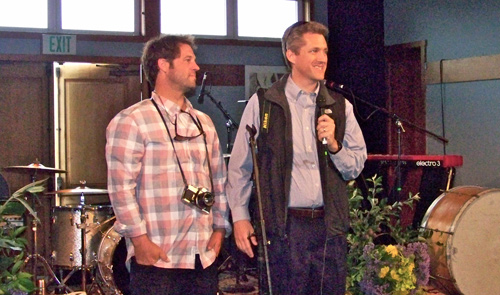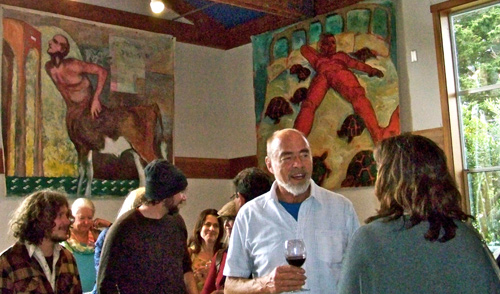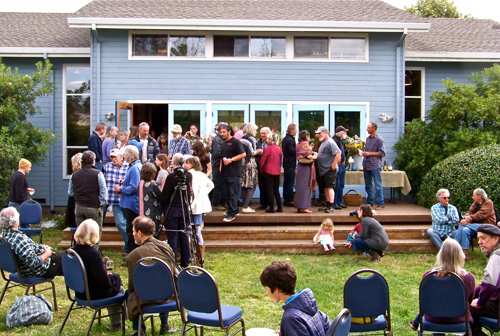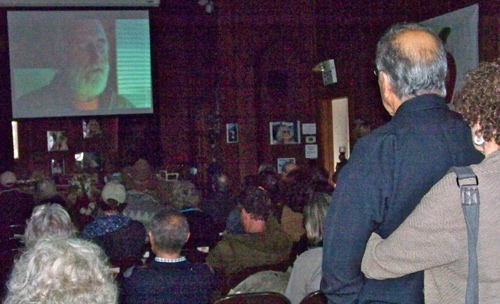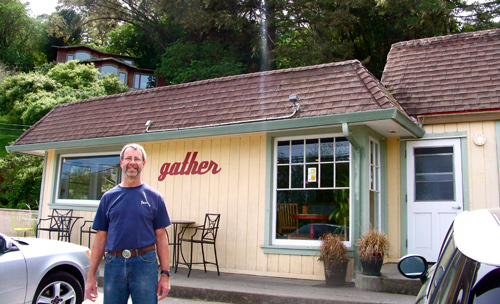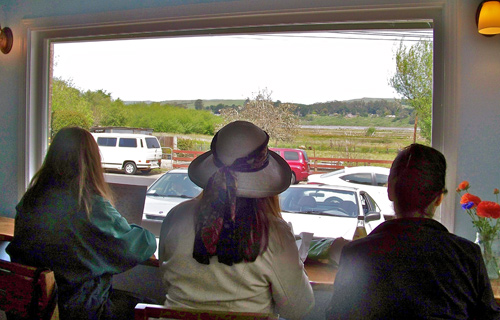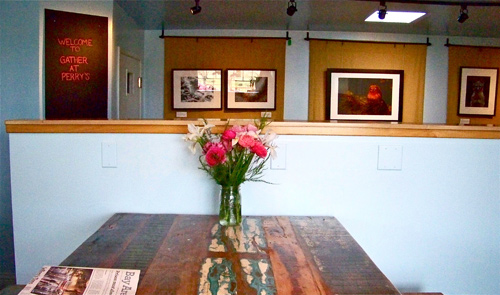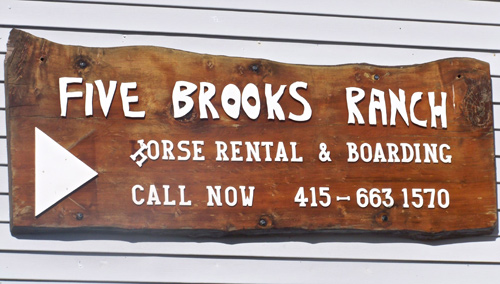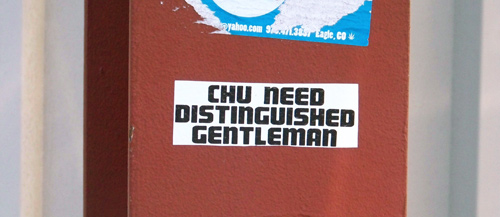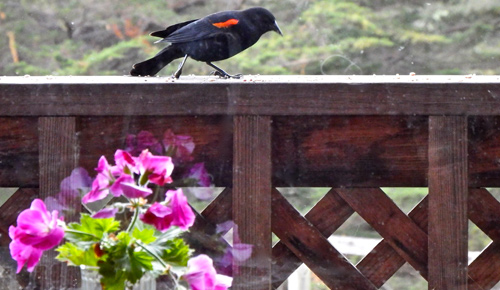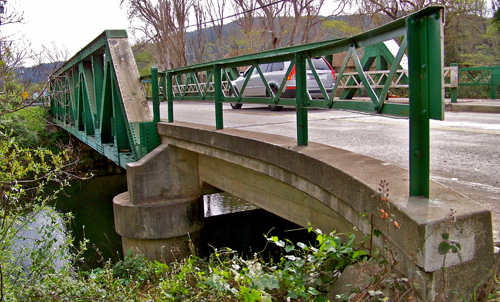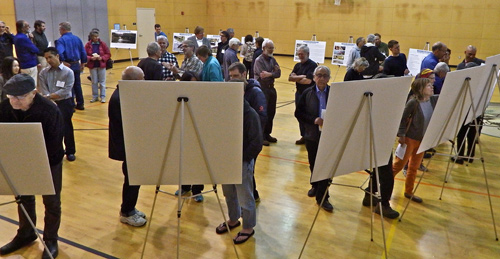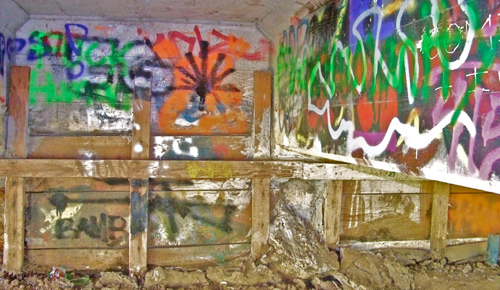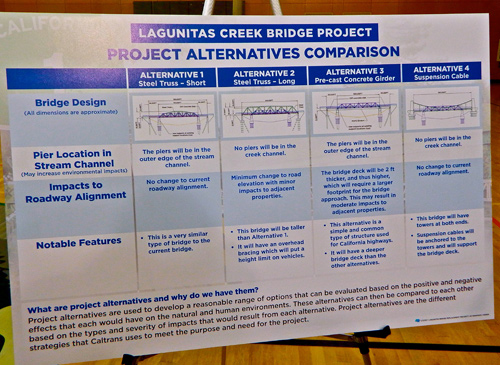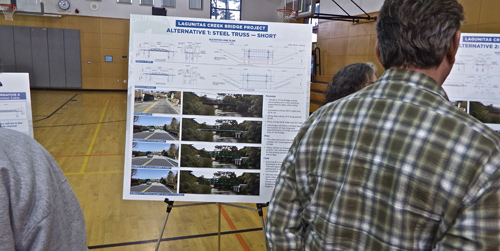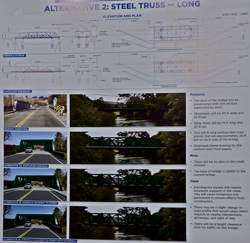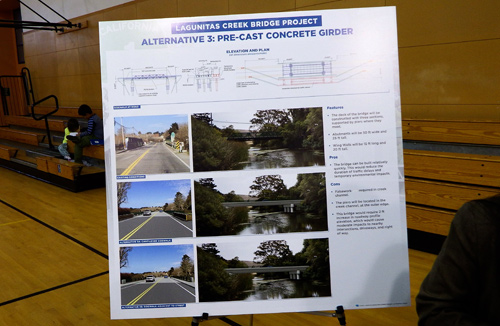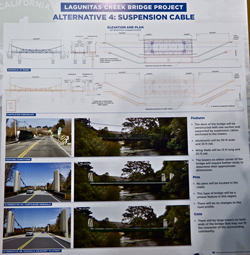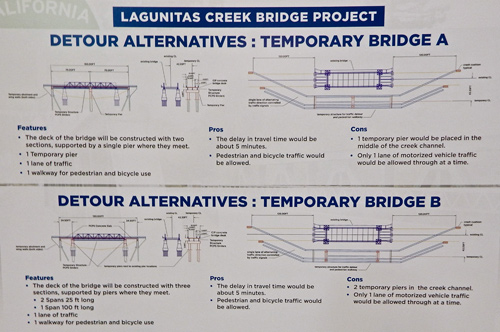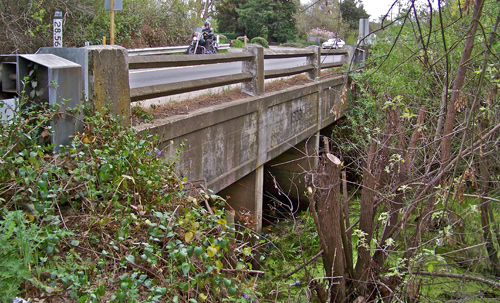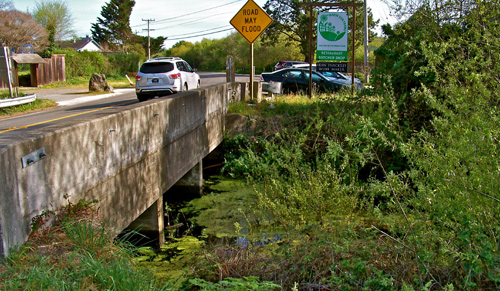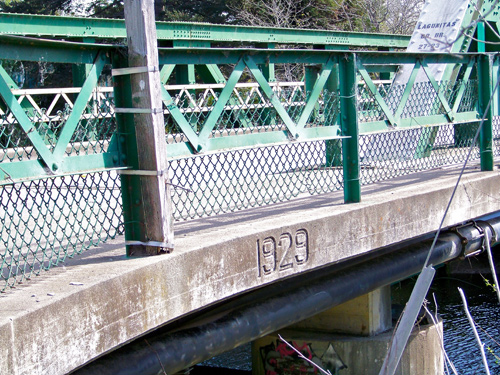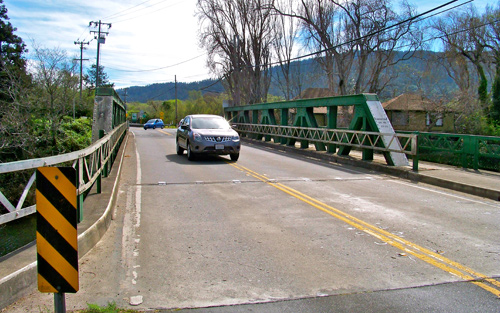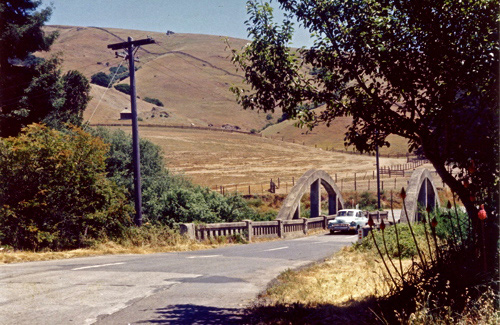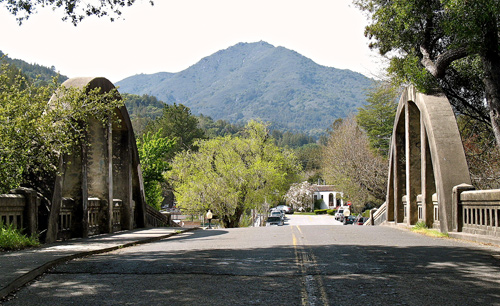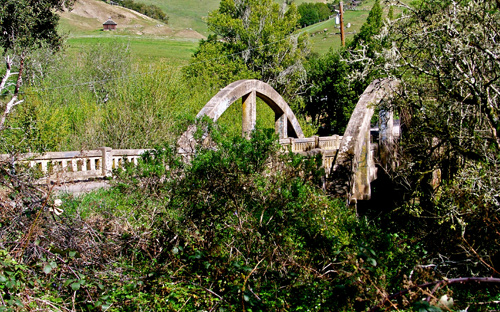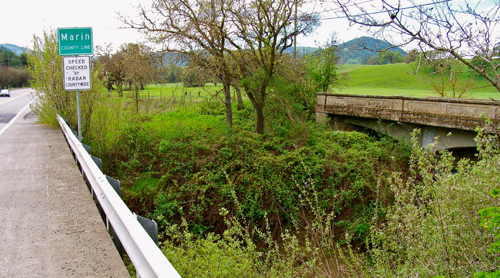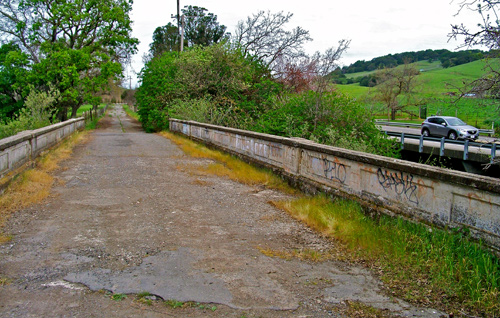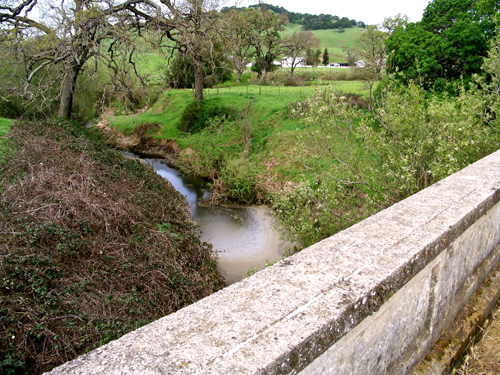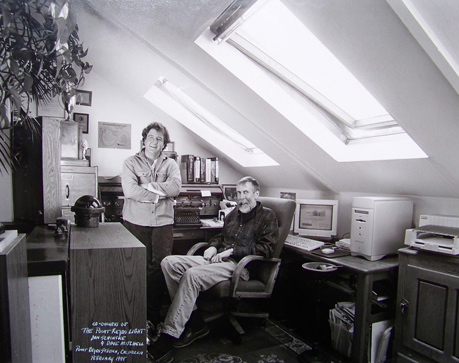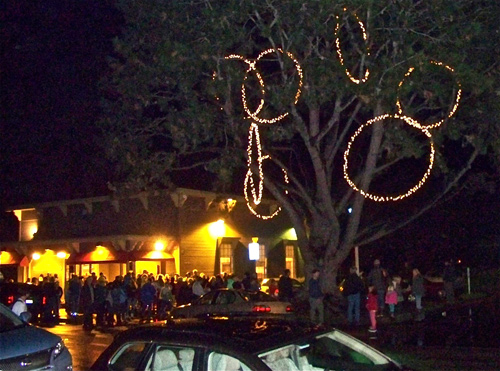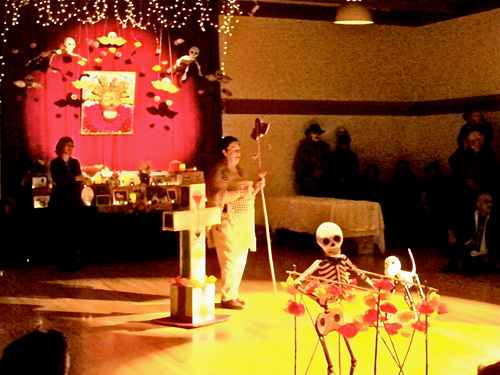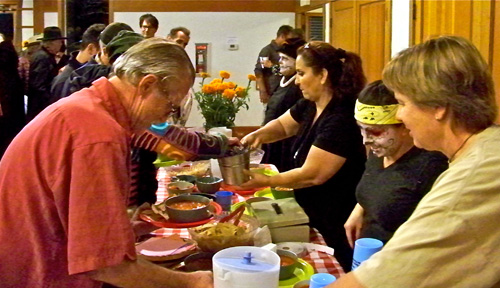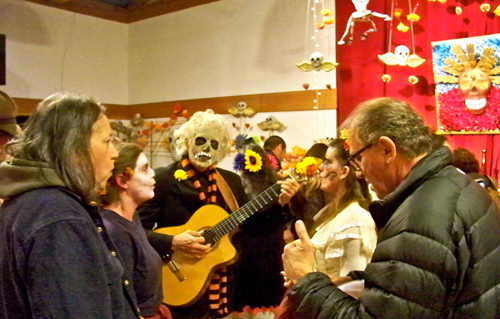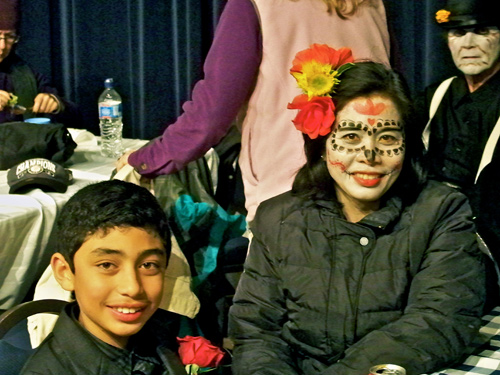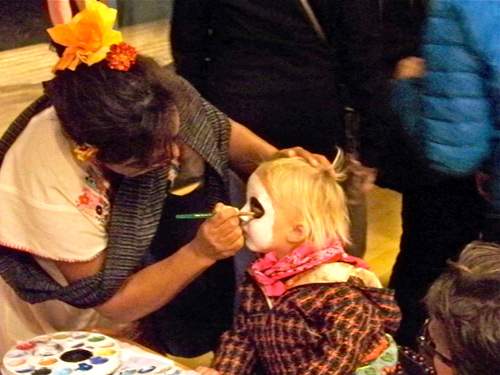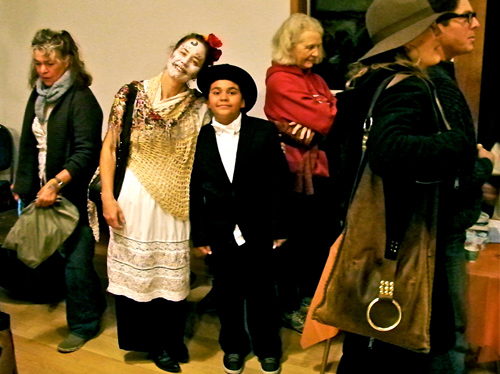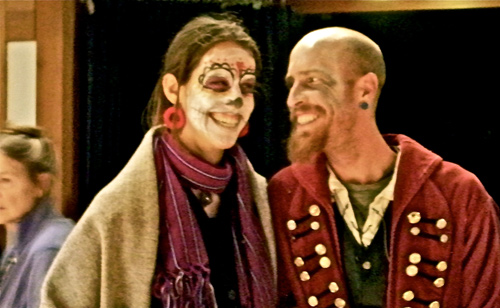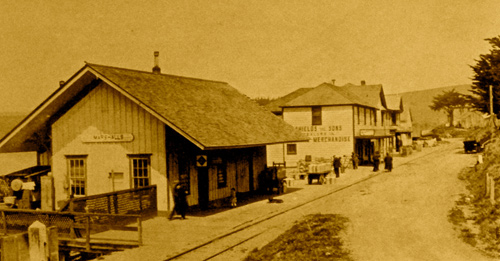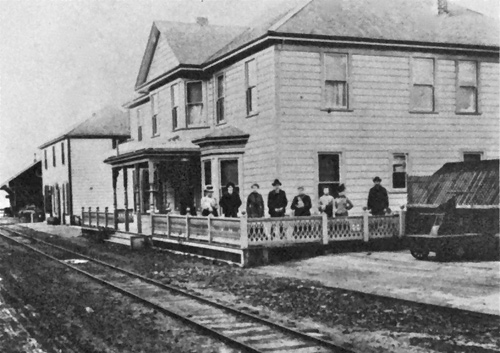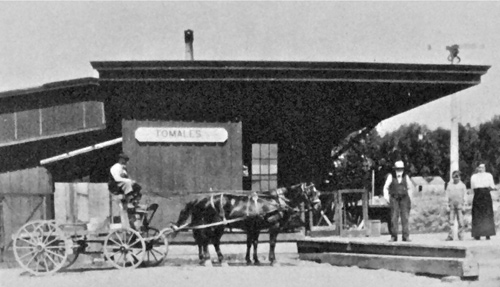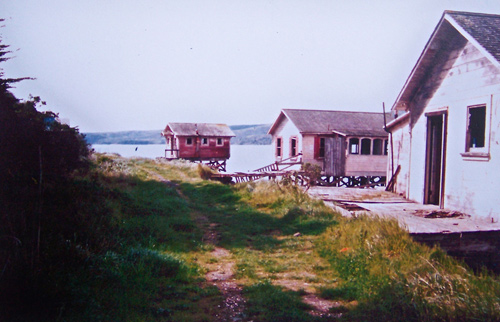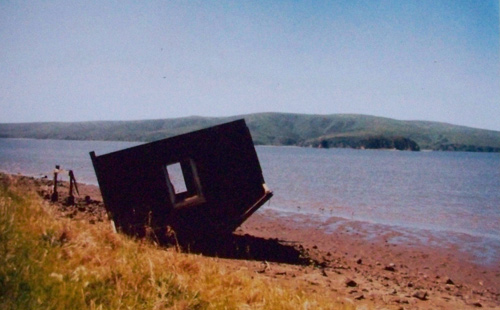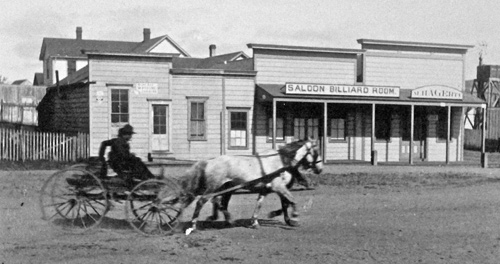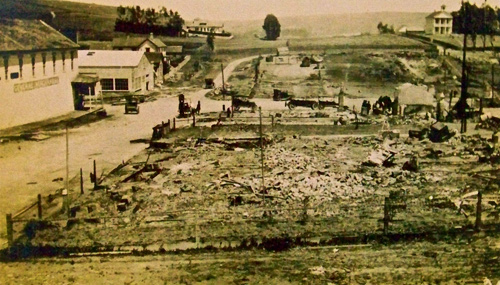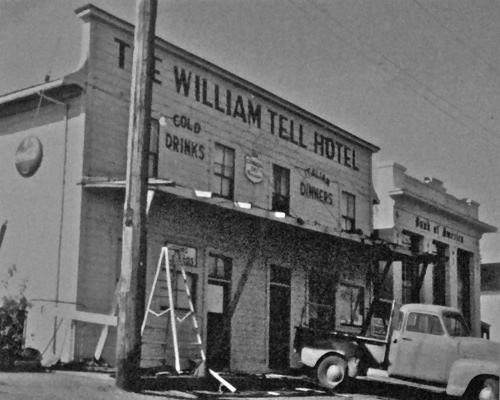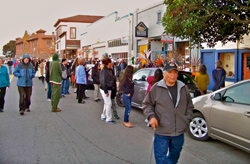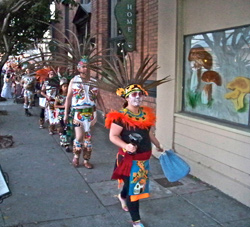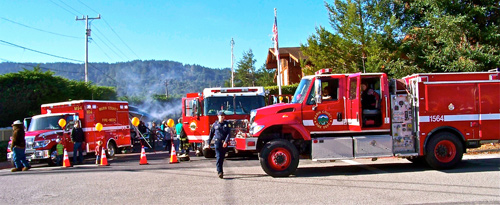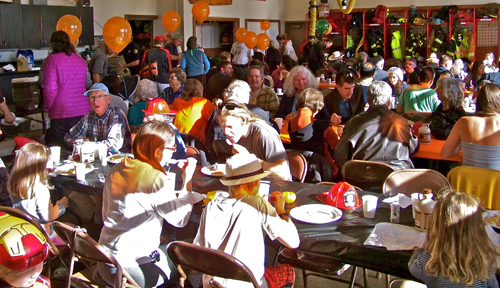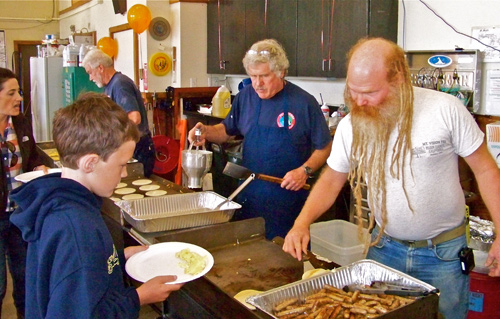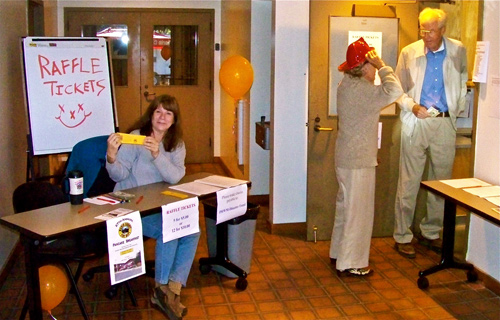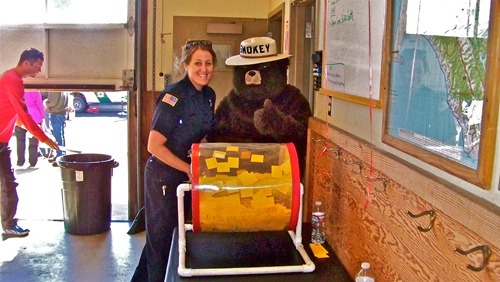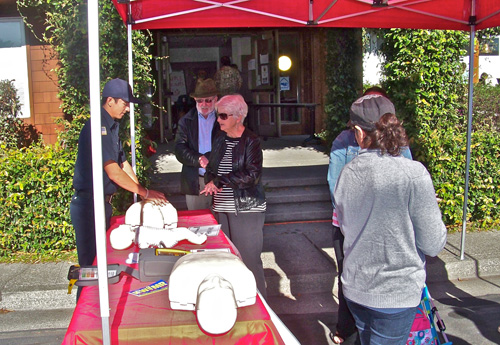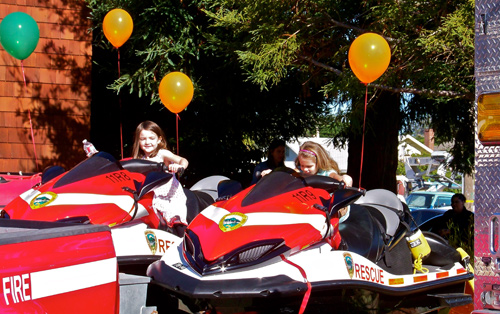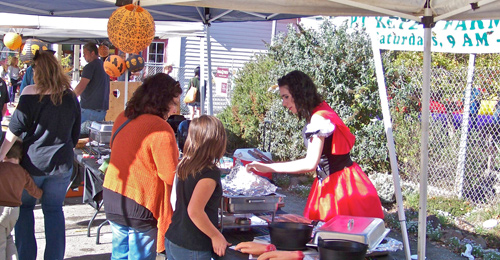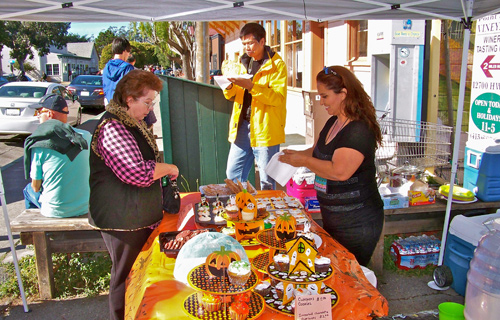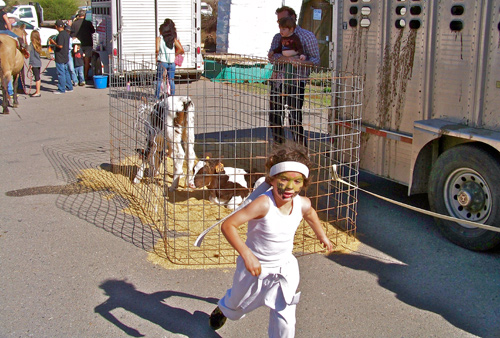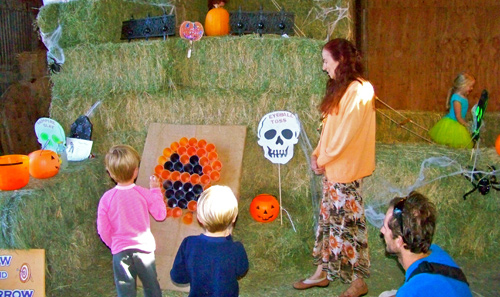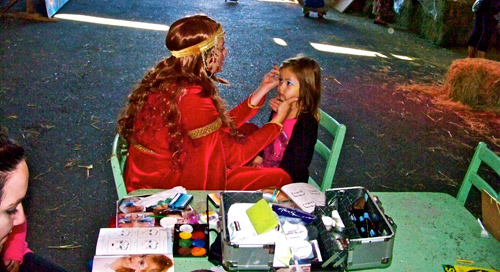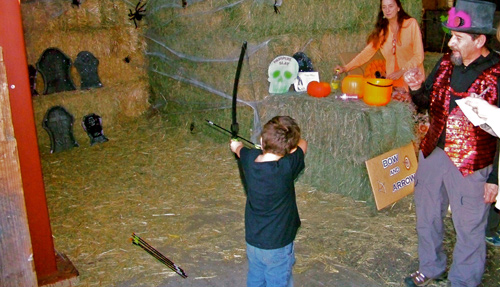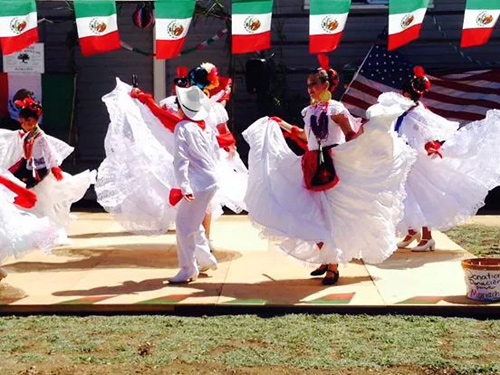Mon 1 Jun 2015
Wake for Donna Sheehan of Marshall reflected her eccentric life
Posted by DavidMitchell under General News, Point Reyes Station
Comments Off on Wake for Donna Sheehan of Marshall reflected her eccentric life
Hundreds of people gathered in and around the Dance Palace Sunday to celebrate the life of Marshall artist and political activist Donna Sheehan, who died April 17 at the age of 85.
Paul Reffell, Donna’s partner for the past 21 years, took the microphone to start Sunday’s memorial, during which more than a dozen friends and relatives of Donna told about their often-amusing experiences with the multi-faceted artist/activist.
The memorial was a potluck, and a large amount of food (such as these oysters) and drink was consumed.
Paul and Donna at her 80th birthday party, which was celebrated in Toby’s Feed Barn five years ago.
Paul was 21 years Donna’s junior, but they often collaborated on newspaper columns and books. Together they wrote a book titled Brainlines and another titled Seduction Redefined, which advanced Donna’s belief that women, not men, are the natural pursuers. Seduction and orgasms were central to Donna’s world view, and she never had a problem talking or writing about either. One of Sunday’s speakers, Toni Littlejohn of Point Reyes Station, told of the time Donna called her to report with hesitant pride that she’d had 25 orgasms that morning.
Donna’s nephews Erik Oehm (right) and Jacob Day told of the joy of having her as an aunt. Local musicians performed after the speakers were done.
Photo by Lynn Axelrod
An altar adorned with photographs of Donna and with her art was set up in the Dance Palace’s “church space.” Also part of the display was the hat she often wore.
Photo by Lynn Axelrod
Donna’s art, as usual, drew numerous compliments during the wake. She had little art training but had studied design and printmaking.
 Photo copyright Art Rogers 2002
Photo copyright Art Rogers 2002
But it was political activism for which Donna was best known. During a chilly rain on Nov. 12, 2002, Donna gained worldwide attention when she assembled 50 “unreasonable women” at Point Reyes Station’s Love Field. Lying naked on the wet grass, the women spelled out PEACE with their bodies while Point Reyes Station photographer Art Rogers recorded the event.
Donna at the time explained she got the idea from a similar protest in Nigeria earlier in the year. Women fighting corporate exploitation stood nude in a vigil that lasted several days outside of Nigeria’s parliament, she noted. “[The Nigerian women] shamed the men and won their cause” she said. This photo of the demonstration, which was published in The Point Reyes Light, was immediately republished throughout the world and inspired many similar demonstrations.
Donna had previously garnered widespread attention in West Marin when in 1983 she organized a group called MOW (Mow Our Weeds) to pressure Caltrans to start mowing weeds along Highway 1 and stop using herbicides.
Photo by Lynn Axelrod
The crowd for Donna’s wake was so large it spilled out onto the Dance Palace’s front deck and lawn. In a testament to how many people were in Donna’s world, more than a few people remarked that they kept running into old acquaintances they seldom get to see.
A movie with and about Donna and her lifelong pursuits was shown in the church space. Photo by Lynn Axelrod
Donna died of “an overdose while I was away for an hour, shopping in Point Reyes Station,” Paul explained at the time. Her suicide was not unexpected. “We had talked many times, including [with other people] about her finding a way out as her health deteriorated and her pain increased,” Paul wrote the next day.
Sunday’s wake was organized by Robin Carpenter in accordance with Donna’s wishes.


